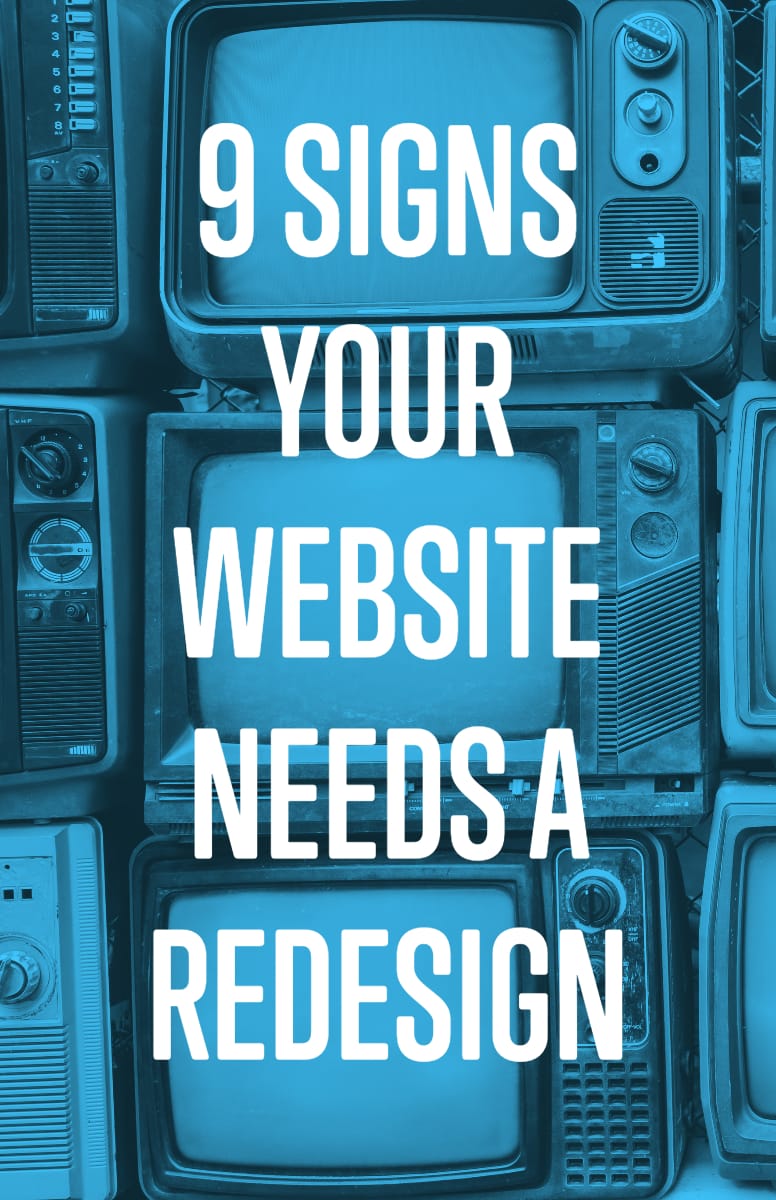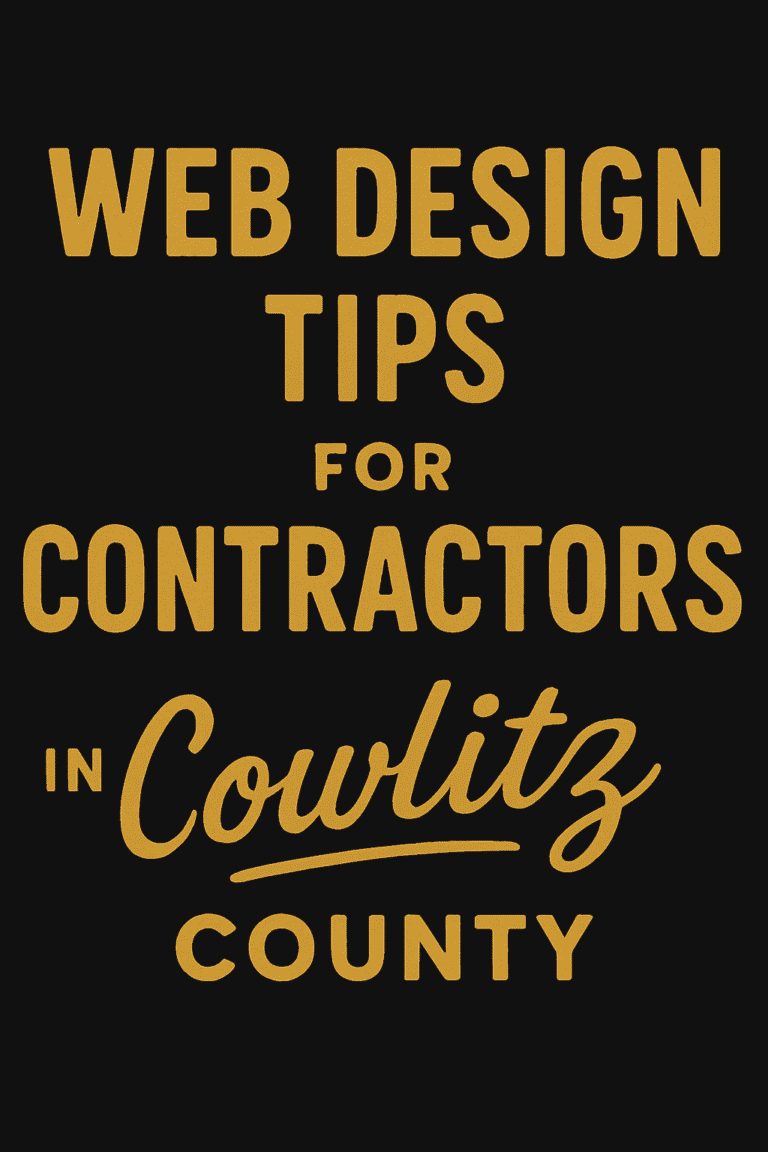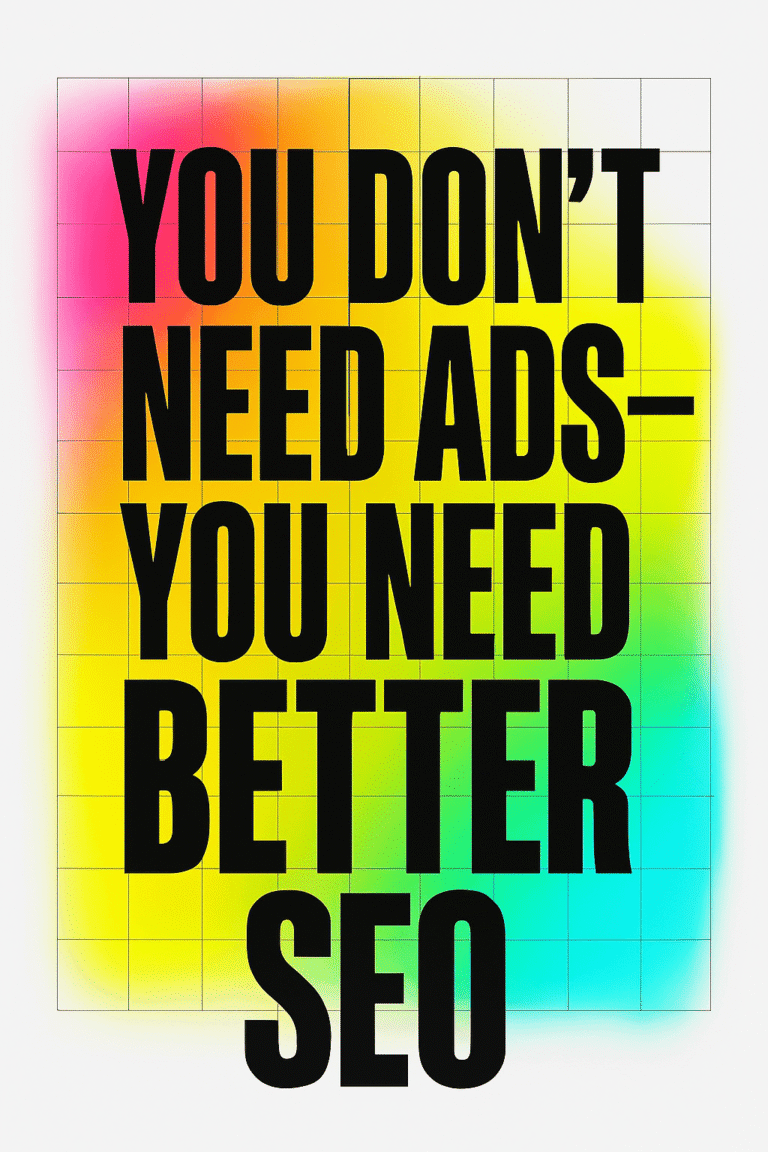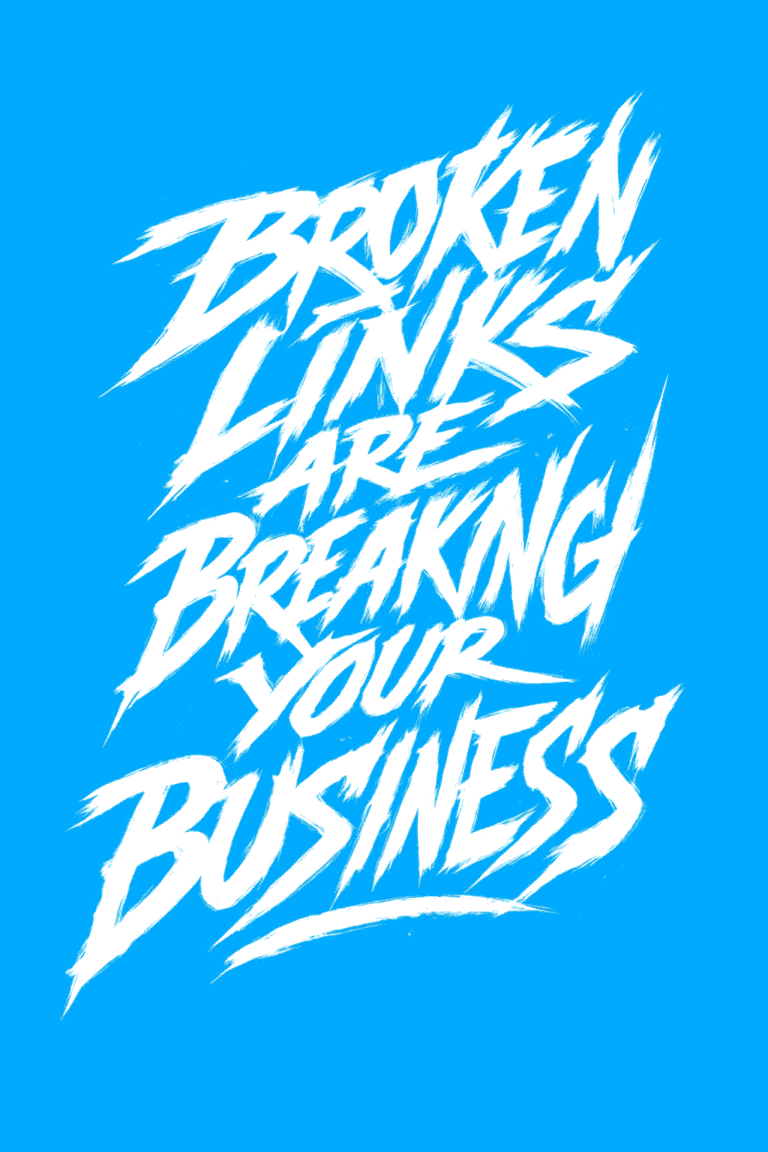
Your website is often the first impression customers have of your business. Think of it as your online storefront; just as you wouldn’t want peeling paint or a cracked window at your physical location, an outdated or poorly functioning website can send the wrong message, too. This is especially true for local businesses, where word of mouth travels fast and reputations are built not just on products or services, but also on the overall experience you provide.
But how do you know when your website has crossed the line from “needs a quick touch-up” to “needs a complete overhaul”? That’s what we’re diving into today. This blog post aims to help business owners, marketers, and executives alike to identify the tell-tale signs that their website is due for a redesign.
Why a Website Redesign is Crucial
Staying current online isn’t just a nice-to-have; it’s essential for the health and growth of your business. There are three key reasons why keeping your website up-to-date is non-negotiable: business growth, user experience, and search engine optimization (SEO).
Business Growth
First and foremost, your website is one of your most potent sales tools. An outdated website can directly impact your bottom line by turning potential customers away or making it difficult for them to find what they’re looking for. An intuitive, modern website not only attracts new customers but also keeps existing ones coming back, thereby increasing your potential for growth.
User Experience
Second, user experience (or UX) is all about how visitors interact with your website. Do the pages load quickly? Is the navigation intuitive? Can users find what they’re looking for without hassle? A well-designed website should function as a helpful guide, leading visitors down the path to purchase or inquiry. When your website delivers a strong UX, you’re building positive relationships and trust, which are foundational for any successful business.
Search Engine Optimization (SEO)
Finally, let’s talk about SEO. Search engines, like Google, prioritize websites that offer valuable content, are well-structured, and load quickly. An outdated website can seriously harm your search engine rankings, making it harder for potential customers to find you in the first place. A redesign can boost your SEO, increasing your visibility and, ultimately, your customer base.
So, a website redesign isn’t just about aesthetics or keeping up with the latest tech trends. It’s a critical investment in the future success of your business, affecting everything from your customer relations to how easily people can find you online.
Okay, now let’s explore the signs that signal your website could use a makeover.
Sign 1: Your Website Isn’t Mobile-Friendly
Statistics About Mobile Browsing
Do you know that most of all web traffic worldwide is generated through mobile phones? Those are users browsing on a smaller screen. Locally, this trend is mirrored as well, with many folks in Longview and Washington State relying on mobile devices to find information, shop, and interact with businesses online.
Why a Mobile-Friendly Design is Crucial
Why is this important for you? Simple—failing to optimize your website for mobile use means you’re potentially alienating over half of your audience right off the bat. Users are more likely to abandon a site that doesn’t load well on mobile, leading to lost opportunities for engagement and sales. Moreover, Google also factors mobile-friendliness into its ranking algorithm, so your SEO could take a hit as well.
When a website is mobile-friendly, it automatically adjusts to fit the screen size of the device being used, ensuring text is readable, buttons are easily clickable, and navigation is a breeze. If your website isn’t doing these things, you’re not just behind the curve—you’re driving away business.
Sign 2: Slow Loading Speed
How Slow Loading Speeds Can Affect User Experience and SEO
We’ve all been there—you click on a website and then wait… and wait… and wait some more for it to load. Frustrating, isn’t it? You’re not alone in feeling that way. According to studies, over 50% of mobile users will abandon a site if it takes longer than three seconds to load. That’s not a lot of time to make a good impression.
But it’s not just the user experience at stake. Slow loading speeds also harm your search engine rankings. Google considers page speed as one of its ranking factors, meaning a slow site can seriously hamper your SEO efforts, making it harder for people to find you in the first place.
Tips for Checking Your Website’s Speed
Wondering how to gauge the speed of your website? There are several free tools you can use, such as Google’s PageSpeed Insights or GTmetrix. Simply plug in your website’s URL, and these tools will give you a breakdown of your loading speeds and offer suggestions for improvement. You can also check your site’s performance through Google Analytics, which provides comprehensive data including user behavior and site speed.
Sign 3: Outdated Design and User Interface
The Psychological Impact of an Outdated Design on User Trust
We often say, “Don’t judge a book by its cover,” but let’s be real—most of us do, especially when it comes to websites. An outdated design can have a profound psychological impact on how users perceive your business. Old-fashioned graphics, clunky navigation, and dated color schemes can give the impression that your business is out of touch or even unreliable. Studies have shown that website users form an opinion about a site in as little as 50 milliseconds. If your website looks like it’s stuck in the early 2000s, you could be losing potential customers before they even have a chance to explore what you offer.
Importance of Modern Design Elements
Modern design isn’t just about looking pretty; it’s about functionality, user experience, and staying competitive. Updated design elements like responsive layouts, intuitive navigation, and contemporary aesthetics not only make your site more enjoyable to use but also make it easier for users to find what they’re looking for. In addition, newer design standards often come with better coding practices, which improve load time and SEO performance.
Having a modern, sleek design signals to your visitors that you’re up-to-date and relevant in your industry. It shows you care about your customers’ experience and are committed to making their interaction with your business as seamless as possible.
Sign 4: High Bounce Rate
Explanation of Bounce Rate
First things first—what exactly is a “bounce rate”? Bounce rate refers to the percentage of visitors who navigate away from your website after viewing only one page. It’s a metric you can easily find in tools like Google Analytics, and it provides valuable insights into how your website is performing. Generally speaking, a lower bounce rate means that people are exploring more of your website, which is typically a good sign.
How a High Bounce Rate May Signal a Need for Redesign
Now, if you’re seeing a high bounce rate, that’s often a red flag. It usually means that visitors aren’t finding what they’re looking for, or they find the website too difficult or unappealing to navigate. High bounce rates can be due to a variety of factors, such as slow load times, outdated designs, or confusing layouts—all of which we’ve already talked about.
A high bounce rate can seriously affect your business by lowering your conversions and ultimately your revenue. If people are bouncing, they’re not buying. And if they’re not buying, you’re missing out on potential profits. Moreover, a high bounce rate can negatively impact your SEO, making your website less likely to show up in search engine results over time.
Sign 5: Low Conversion Rates
Discussion on How Poor Design Can Affect Conversion Rates
If you’re getting traffic to your site but aren’t seeing the sales, inquiries, or sign-ups you’re aiming for, you could be dealing with a conversion rate problem. Your conversion rate is the percentage of visitors who complete a desired action on your site, such as making a purchase or filling out a contact form. Poor website design can dramatically affect this number.
Issues like confusing navigation, lack of compelling calls-to-action, or an overly complicated checkout process can deter visitors from converting. If the user experience is frustrating or confusing, your potential customers are more likely to abandon their carts or leave your site altogether. Essentially, your website should facilitate the conversion process, not hinder it. If it’s doing the latter, a redesign may be in order.
Tips on How to Track Conversion Rates
Wondering how to track these all-important conversion rates? Most analytics tools, like Google Analytics, offer straightforward ways to set up conversion tracking. You can track various types of conversions depending on your business goals, such as purchases, form submissions, or even video views. Once you’ve set up the tracking, you’ll receive data that can help you understand where you’re losing potential customers and identify areas for improvement.
Sign 6: Poor SEO Performance
How an Outdated Website Can Affect SEO Ranking
Search Engine Optimization (SEO) is like the secret sauce for making your website visible in search engine results. If your SEO performance is lagging, it could be another sign that your website needs a redesign. An outdated website can drastically hurt your SEO in several ways, including slow load times, lack of mobile optimization, and outdated content—all factors that search engines consider when ranking websites. Essentially, an old and ineffective website won’t help you climb the search engine rankings. On the contrary, it may send you plummeting, making your site hard to find and driving potential customers to more up-to-date competitors.
Brief Tips on SEO Best Practices
Boosting your SEO isn’t something that happens overnight, but here are a few quick tips:
- Regularly Update Content: Search engines love fresh, high-quality content. Keep your blog updated and make sure your product descriptions and other texts are current.
- Optimize for Mobile: As mentioned earlier, mobile-friendliness is a ranking factor. Make sure your website is responsive on all devices.
- Improve Load Speeds: Use tools like Google’s PageSpeed Insights to identify areas where your website’s performance can be improved.
- Utilize Keywords: Conduct keyword research to identify phrases and terms that are important in your industry, and then incorporate them naturally into your site’s content.
- Use Alt Text for Images: Don’t ignore the alt text; it helps search engines understand the content of the images, which can improve your website’s SEO.
Sign 7: Lack of Content Updates
Importance of Fresh Content
We’ve all stumbled upon websites that feel like they’re stuck in a time capsule. The blog hasn’t been updated in years, and the ‘latest news’ is from three seasons ago. This not only makes your site look neglected, but it also harms your SEO and user engagement. Fresh content isn’t just a nicety; it’s a necessity. Updated, relevant content keeps visitors coming back, engages them longer, and fosters a relationship that can turn one-time visitors into repeat customers. It also signals to search engines like Google that your website is active, improving your chances of a better ranking.
How Stagnant Content May Signal the Need for a Redesign
If you find that your website has turned into an online version of a ghost town, it’s probably time to consider a redesign. The lack of fresh content could be due to an outdated content management system (CMS) that’s difficult to use, or maybe the site structure doesn’t easily allow for updates.
A redesign could give you the opportunity to integrate a more user-friendly CMS, reorganize your content strategy, or even add new sections that will make regular updates easier and more effective. This could be anything from a blog section, a reviews page, or a regularly updated portfolio.
Sign 8: Your Website Isn’t Secure
Importance of SSL and Other Security Measures
In a world where data breaches and cyberattacks are unfortunately common, website security is not something to be taken lightly. The first step towards securing your website is implementing an SSL (Secure Sockets Layer) certificate. This certificate encrypts data transmitted between your server and the user’s browser, making it much harder for malicious actors to interfere. An SSL not only protects your users but also enhances their trust in your website. Most web browsers will flag sites without SSL as ‘Not Secure,’ which is far from inviting for potential customers.
Web Application Firewall (WAF)
Another layer of security that’s becoming increasingly important is a Web Application Firewall, or WAF. A WAF serves as a protective barrier between your website and incoming traffic, filtering out malicious attacks like SQL injection, Cross-Site Scripting (XSS), and others before they can reach your site. It’s like having a security guard at the door, vetting every visitor before they’re allowed in.
Malware Scanning and Monitoring
Regular malware scans and monitoring are also essential. Just like you wouldn’t go years without a health check-up, your website also needs regular examinations to make sure it’s in good shape. Automated malware scanning can alert you to any suspicious activity or vulnerabilities, giving you a chance to fix issues before they become serious problems.
Sign 9: Negative User Feedback
Why User Feedback is Valuable
It’s easy to get caught up in analytics and technical aspects of a website, but at the end of the day, the most important metric is user satisfaction. Negative feedback from your users is like gold; it’s valuable information that can tell you exactly what needs to be fixed or improved. Whether it’s complaints about a complicated checkout process, difficulties in navigating the site, or general usability issues, these are direct signals from your target audience saying, “Hey, something’s not working here.”
How to Collect and Interpret Feedback for Redesign
Collecting user feedback doesn’t have to be complicated. Simple methods include customer surveys, feedback forms, or even direct emails asking for opinions. Tools like Google Forms, SurveyMonkey, or specialized software like Hotjar can also capture real-time user behavior and feedback. Social media and online reviews are another rich source of honest opinions.
Once you have this feedback, the next step is interpretation. Look for common threads or recurring issues. Are multiple users complaining about the same thing? That’s a clear sign of a problem that needs to be addressed. It might be as simple as tweaking some elements, or it might require a more comprehensive redesign.
Takeaways
Your website is more than just a digital business card; it’s a dynamic platform where your customers interact with your brand. Over time, even the best websites can start to show their age, suffering from outdated design, slow load times, and lackluster performance. In this post, we’ve outlined nine clear signs that your website may be due for a makeover, from lack of mobile-friendliness and poor SEO performance to more urgent issues like inadequate security measures and negative user feedback.
If you’re nodding your head as you go down the list, it’s not too late. The world of web design moves quickly, but so do the benefits that come from staying up to date. A modern, efficient, and user-friendly website can dramatically improve your customer experience, SEO rankings, and ultimately, your bottom line.
Call to Action
If any of these signs struck a chord, it’s time to take action. Don’t let an outdated website be the bottleneck of your business’s potential. Reach out to us at Graticle Design for a personalized consultation. We specialize in creating websites that not only look great but also perform exceptionally well, turning visitors into loyal customers.
Let’s work together to bring your website into the present, setting you up for a successful future.





